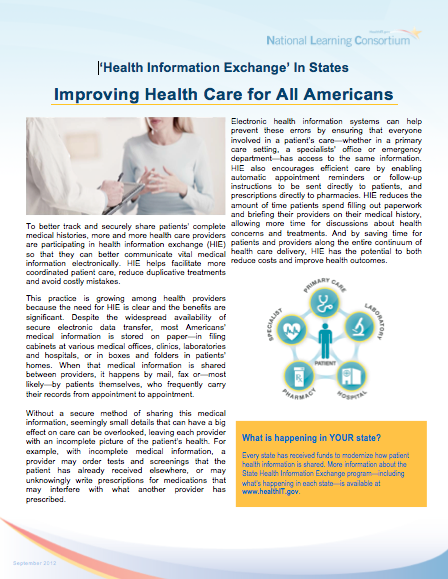Nationwide HIE Strategy
Today, meaningful use requirements and new payment approaches that stress care coordination—including accountable care organizations (ACOs), bundled payment options, and patient-centered medical homes (PCMHs)—are motivating providers to participate in health information exchange (HIE) to better share medical information to provide more effective, efficient health care services. Federal financial incentives are also driving interest in and demand for HIE.
The Office of the National Coordinator for Health Information Technology (ONC) has led the process of establishing the essential building blocks to support health information exchange, and is now entering the next phase of facilitating the development of enhanced HIE services across the United States. With the foundation established for HIE, providers are exchanging health information in increasing numbers and multiple networks and approaches to HIE are occurring simultaneously. To ensure all states operate under a common set of guiding principles and can communicate as a coordinated system, a national strategy on health information exchange is critical. ONC’s current HIE priorities include:
- Set clear goals for health information exchange and measures of success, including improved patient outcomes
- Develop policies and standards that can solve interoperability issues and reduce the cost of adoption
- Ensure patients remain at the center of health information exchange and have access to their electronic information
To jumpstart the transition to better care where information can be shared quickly among health providers, Congress allocated $548 million to states under the State HIE Cooperative Agreement Program. This effort is administered by ONC and every state has received funds to modernize how patient health information is stored and shared. Learn more about the State HIE Cooperative Agreement Program.



